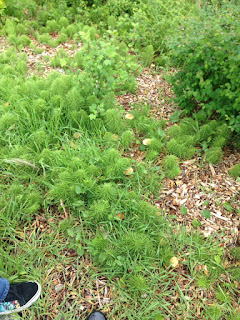Service Learning Water Quality Testing
Service Learning: Water Quality Testing
Date of the event: Sunday, June 11Hours of volunteering: 4 hours (10 am to 2 pm)
Name of the organizer: Kacie Mc Carty
Email of the organizer: kacie.mccarty@email.edcc.edu
This event has been organized by EDCC. This consisted in testing the quality of the water in the Big Gulch streams of Mulkiteo. The goal was to test and control the quality of the water to make sure it respects the vital conditions of the ecosystem as the salmons which are many along the river.
During the event, we had to collect and gather data directly from the stream's water. We monitored the E.COLI, the water pH, the turbidity as well as the alkalinity of the water.
Photo by David Hageage
During my service learning that consisted in testing the quality of the water in the Big Gulch streams of Mulkiteo, volunteers were involved in gathering data in order to determine the levels of e.coli, pH, turbidity (murky quality), and the alkalinity of the water. I could really realize the importance of science in our society, as it allows us to directly make connections with our environment, and the impacts human actions may have on it. Scientists and biologists play an important role in determining the actual conditions of our environment, as for instance the quality of the water. By gathering samples of water directly from the stream, and testing potential chemical reactions to determine the different conditions, we were able to tell if the biodiversity of the stream environment was endangered. As scientists make regular similar tests, they are able to compare the actual results with the past ones, observing the different changes over the time in the E.COLI level, the water pH, the turbidity as well as the alkalinity of the water. Environmental scientists have far more resources than we had, and are able to make conclusions telling what are the potential causes to the different increases/ decreases of the variables over time.
Human pollution through land, air and water pollution are the three main causes to the decrease of the salmon's population in the Big Gulch stream. For example, the industrial pesticides infiltrated in lands pollute our rivers, as for instance, ammonium, which increases the water pH (more basic). However, the emissions of carbon dioxide caused by industries that burn fossil fuels, intensive framings, and car exhausts are toxic for our water. This is the phenomenon of oceanic acidification. Indeed, 30 to 40% of CO2 rejected in our atmosphere is absorbed by the oceans, liberating free hydrogens ions (H+) and causing the pH of the water to lower which means to turn more acidic. This is a huge ecological problem because it considerably affects the oceanic wildlife as well as the biodiversity in ponds, marshes, rivers, and all water areas that end up in the ocean. For example, the acidity of our rivers caused by mercury or acid leaks, impacts the organs of salmons and make them unable to reproduce. The loss of salmons would be a disaster for the whole food web which would be concerned. So even though we can observe a fast decrease of our water's pH over the last centuries, the pH of our water is still good for life, included between 7 and 9.5. Indeed, I also learned that the decomposition of leaves that fall into the river make the water actually more acidic. Other consequences of an acidification of the water is the lack of calcium carbonate for the organisms that build their skeleton as crabs, mollusks and starfishes. During the last few years, scientists have observed an important decrease in the starfish population. Biologists are still working on determining what are the environmental conditions that make the immune system of starfishes weak facing the concerned virus. This syndrome is called the sea star wasting syndrome. Other organisms have their organs affected like squids that can't orientate themselves well, and all the animals affected by the decrease of the echolocation as whales.
That's actually thanks to scientists that are able to make such researches, and counteract the effects of human pollution "on time". In the environment we studied, many trees were growing along the river, including great maple trees, which help reducing the nitrogen level by filtration. Buttercups, red berry trees and stinky Bob (geraniums) were other plant species present along the river. As we learned in class with the study of wetlands (as Edmonds Marsh and Spencer Island), the pollution of rivers have very negative effects on the whole biosphere as these last end up polluting the sea and the whole oceans, affecting the whole biodiversity that lives along the river, the marshes, until the deep ocean. Preserving our rivers is a crucial key in protecting our marine ecosystem. Fortunately, scientists are controlling the diverse variables, in order to be ready to use permanent solutions, so the biodiversity is not affected. Marine biology is extremely important to our biosphere, as the pollution of our oceans and marine environments would be a disaster for all the biosphere's food chain. Water quality is an primordial step is reducing the human impacts on our environment.
Questions raised during my service learning:
1. How often do scientists and environmental biologists control the quality of the water in rivers?
2. Do environmental scientists have immediate/ and long-term solutions/ plans to reduce water pollution? What are they?
3. Can scientists make a new generation of salmons, that would be resistant to pesticides?
4. How much can the filtrating trees along the river (as great maple trees) absorb nitrogen? Is that enough for the river of the Big Gulch streams of Mulkiteo, to eliminate more than 50% of the nitrogen level?
5. Can scientists create a natural product that would naturally regulate the pH of our streams from their source?
Photo by David Hageage




Comments
Post a Comment